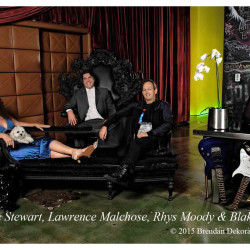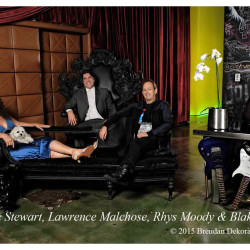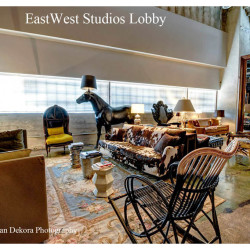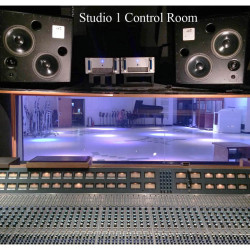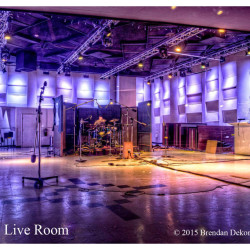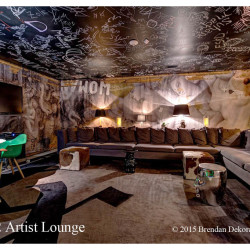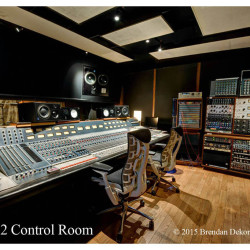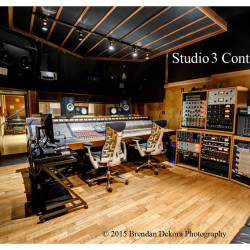Studio Profile: East-West
Many stories have been written about the pivotal role that EastWest Studios has played in the history of modern music. Located in Hollywood, California at 6000 Sunset Boulevard, the facilities opened in 1957 as Western Recorders, became Ocean Way Recording in 1985, Cello Studios in 1999, and finally EastWest Studios in 2006. Many of the studios most famous recordings will still be discussed hundreds of years from now by future music historians, such as Frank Sinatra’s My Way, The Beach Boys’ Pet Sounds, and Michael Jackson’s Thriller, among countless other high-profile recordings. In fact, the studios have produced more Grammy-winning recordings than any other studio in the world. However, the story of EastWest Studios is also one of technical innovation. Many of today’s modern recording practices can be traced back the studios’ founder, Bill Putnam.
Bill Putnam – Frank Sinatra’s personal engineer – completely overhauled the studio when he first acquired it, converting it from a radio broadcast center. Putnam is widely credited for inventing many of the essential modern recording techniques and technologies, including the recording console, multi-band equalization, and artificial reverberation. Under the banner of his manufacturing company URIE, Putnam designed the still-ubiquitous LA-2A and 1176 compressors. Putnam’s genius carried over to the design of the studios’ live rooms, which he considered his crowning achievement. In 1985, Putnam sold the studio to engineering marvel Allen Sides (Phil Collins, Eric Clapton, Ella Fitzgerald, Frank Zappa, and so on), who not only maintained all that Putnam had built, but introduced new technological advances.
Visionary producer and Renaissance man Doug Rogers purchased the facility in 2006, almost surely saving it from the wrecking ball. Rogers is best known for founding EastWest Sounds, the pioneer – and the unassailable leader – of professional-grade sample libraries. Rogers spent three years renovating the space before opening it as EastWest Studios in 2009. “Doug left the acoustics of the live rooms alone, and most of the vintage gear remained, including Studio 1 and Studio 2’s Neve consoles,” explained Candace Stewart, manager of EastWest Studios. “Studio 3 needed a new console and after a lot of research, Doug replaced it with a vintage Trident ‘A’ Range. In addition, he upgraded the ancient electrical infrastructure to hospital-grade and repaired much of the wiring in the control rooms. It was a huge undertaking.”
Meanwhile, famed French designer Phillippe Starck completely redid all of the studio’s lobby, artist lounges, and added a state-of-the-art kitchen. He redesigned the structure of the hallways to promote more interaction between artists, producers, and engineers. “Creative cross-pollination is one of the things we’re happy to promote,” said Blake Rogers, EastWest’s chief marketing officer. “We love hearing stories of old friends bumping into each other on the way to the bathroom – ‘Oh, you’re here! Come check out the song I’m working on!’ And the next thing you know, they’re working on each other’s tracks. It’s a real source of creative inspiration.”
One puzzle that Doug Rogers faced was what monitors to put into each of these legendary control rooms. Doug did his research. He talked to all of his respected industry contacts, and ATCs kept popping up among the favorites. Rogers ultimately decided to install ATC’s largest monitor – the ATC SCM300ASL. “The ATC monitors have served us very well,” said Lawrence Malchose, chief engineer at EastWest Studios. “We’ve had them in place for nearly a decade and they’ve been flawless. They satisfy the needs of our very diverse group of clients and genres. In addition to rock and scoring work, we now get more hip-hop, R&B, and EDM. Across the board, and without exception, people come away commenting on how much they love those monitors!” EastWest Studios also makes ATC SCM150ASL and SCM25A mid-field and near-field monitors available to clients upon request. And as Stewart noted, “Doug has a personal pair of SCM25As just for himself!”
Now six years after opening its doors to outside clients, EastWest Studios is bucking the industry trend toward project studios and suggesting, perhaps, that the pendulum is swinging back to a more sensible middle ground. “The advantage of booking at EastWest is that we give our clients the ability to do things they simply can’t do in their home studios,” Stewart said. “First and foremost, the acoustic spaces we have are the best in the world. Many people have tried to replicate Bill Putnam’s acoustic designs, to various degrees of success, but there’s an intangible perfection in the rooms that Bill built at 6000 Sunset. Like Studio 3 for example: it’s smaller than the other tracking rooms, but it’s where the Beach Boys recorded Pet Sounds and the Mamas and the Papas recorded all their hits. The room has some sort of magic in it. Vocals just sound amazing in there!”
“More and more, people are realizing that there’s just no substitute for a great acoustic space,” added Malchose. “And they’re also realizing that there’s no digital substitute for a great front-end signal path. A lot of young engineers and producers have struggled with plug-ins their entire careers trying to replicate the results that come naturally with a world-class microphone fed through world-class preamps on a world-class console. Then they come here and boom, it sounds fantastic. Another realization that folks have is that ‘vintage’ does not mean, “obsolete.” We maintain all of our vintage equipment in perfect working order and interface it with the latest Pro Tools technology. So we’ve got fifty-year old consoles in perfect shape working in conjunction with the latest digital technology.”
Stewart concluded, “We feel fortunate to be the curators of a fully-functioning museum. We feel protective of the spaces and the gear, and we’re so pleased to be contributing to the modern music industry. We want to provide the services, creative infrastructure, and proven technology that will make our client’s music better. We take that responsibility very seriously.”
